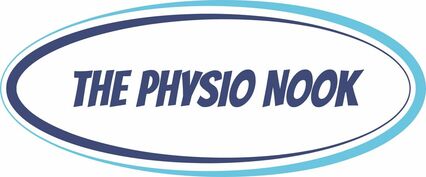Dealing with Tennis elbow
Tennis elbow, lateral epicondylitis and lateral epicondylalgia all refer to the same injury. That is, repetitive micro trauma causing degenerative changes or small tears to the tendons (common extensor origin) that attach to the prominence that is the lateral epicondyle of the elbow. This condition is most common in the age group of 35 to 65 and is certainly not limited to tennis players!
Causes:
Pain is usually a result of repeated or sustained wrist extension, particularly against resistance. It is worth remembering that an important part of gripping with the hand is a degree of wrist extension also, so repetitive or sustained gripping is an issue as well. Gardening, painting, using hand tools and racquet sports are all activities that place the elbow at risk, as is prolonged use of a keyboard and/or mouse for office workers. Some predisposing factors for this condition include…
- a lack of strength or flexibility in the forearm extensors;
- instability of the elbow joint;
- poor technique in racquet sports with excessive wrist extension;
- inappropriate sporting equipment (too heavy racquet or too large a grip) or hand tools;
- just too much time spent using repetitive movements or contractions of the forearm extensors.
Signs and Symptoms:
Most commonly the patient will report pain either on, or 1 to 2cm distal to the lateral epicondyle of the elbow. This may be accompanied by an ache down the length of the forearm and into the dorsum of the hand. The area around the lateral elbow will be tender to palpation. Weakness and increased pain may be experienced when attempting functional tasks such as gripping and lifting a kettle, saucepan or even just a cup of coffee. These symptoms may be elicited clinically with resisted wrist extension (also resisted 3rd finger extension) and strong gripping of any object.
Treatment options:
As always, a thorough assessment and accurate diagnosis is the cornerstone of successful management. This is done clinically, as X-rays and scans are usually normal in this condition. The number one rule is to avoid aggravating activities in these cases, otherwise the best treatment will struggle to make inroads into recovery. Regular icing can be useful, particularly in the earlier, acute phase of the condition, as well as intermittent stretching of the forearm and finger extensors.
Physiotherapy techniques have been proven to be effective in the majority of these cases, including…
- manual therapy such as massage and myofascial release of the forearm muscles;
- acupuncture or ‘dry needling’ of active points in the affected forearm extensors;
- a supportive strap or brace to help protect the common extensor origin;
- kinesio or rocktaping methods to assist contraction of the extensor muscle group;
- specific stretches for the forearm extensors (and redial nerve if that is also involved);
- an isometric, followed by an eccentric strengthening program.
I hope this summary will help you or someone you know. As always, we are here at The Physio Nook to help out with any musculoskeletal disorders you may have, elbows or otherwise! Feel free to call us, email, or drop in for a great service.
Paul Woodward
Principal Physiotherapist
The Physio Nook.
Pain is usually a result of repeated or sustained wrist extension, particularly against resistance. It is worth remembering that an important part of gripping with the hand is a degree of wrist extension also, so repetitive or sustained gripping is an issue as well. Gardening, painting, using hand tools and racquet sports are all activities that place the elbow at risk, as is prolonged use of a keyboard and/or mouse for office workers. Some predisposing factors for this condition include…
- a lack of strength or flexibility in the forearm extensors;
- instability of the elbow joint;
- poor technique in racquet sports with excessive wrist extension;
- inappropriate sporting equipment (too heavy racquet or too large a grip) or hand tools;
- just too much time spent using repetitive movements or contractions of the forearm extensors.
Signs and Symptoms:
Most commonly the patient will report pain either on, or 1 to 2cm distal to the lateral epicondyle of the elbow. This may be accompanied by an ache down the length of the forearm and into the dorsum of the hand. The area around the lateral elbow will be tender to palpation. Weakness and increased pain may be experienced when attempting functional tasks such as gripping and lifting a kettle, saucepan or even just a cup of coffee. These symptoms may be elicited clinically with resisted wrist extension (also resisted 3rd finger extension) and strong gripping of any object.
Treatment options:
As always, a thorough assessment and accurate diagnosis is the cornerstone of successful management. This is done clinically, as X-rays and scans are usually normal in this condition. The number one rule is to avoid aggravating activities in these cases, otherwise the best treatment will struggle to make inroads into recovery. Regular icing can be useful, particularly in the earlier, acute phase of the condition, as well as intermittent stretching of the forearm and finger extensors.
Physiotherapy techniques have been proven to be effective in the majority of these cases, including…
- manual therapy such as massage and myofascial release of the forearm muscles;
- acupuncture or ‘dry needling’ of active points in the affected forearm extensors;
- a supportive strap or brace to help protect the common extensor origin;
- kinesio or rocktaping methods to assist contraction of the extensor muscle group;
- specific stretches for the forearm extensors (and redial nerve if that is also involved);
- an isometric, followed by an eccentric strengthening program.
I hope this summary will help you or someone you know. As always, we are here at The Physio Nook to help out with any musculoskeletal disorders you may have, elbows or otherwise! Feel free to call us, email, or drop in for a great service.
Paul Woodward
Principal Physiotherapist
The Physio Nook.


